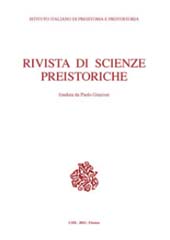Artículo
Digital Version
Download | NO Copia/pega | Impresión
La necropoli del Bronzo finale di Campo Pianelli di Bismantova alla luce dei dati antropologici
P. 1-30
- Archaeological excavations of the Final Bronze Age necropolis Campo Pianelli, carried out in 1973 and 1974, have yielded 49 cremation graves, including 16 with human remains nowadays preserved. Authors emphasize certain traits of the group that can offer insights on the funerary practices. The weight of the bone fragments contained in each urn and the identified skeletal districts are indicative of the practice of collecting cremated remains. Color of the fragments and other heat effects are indicative of the duration of the fire and then the size of the pyre/quality of the wood. The number of multiple graves and the composition of the sample by age-at-death and sex provide clues about the funerary habits. Finally, the degree of bone fragmentation and the presence of traces of "intrusion" by elements not belonging to the main deceased is suggestive of technical aspects of the rite.
- The work therefore addresses the review of the archaeological aspects of ossuaries and grave goods in the light of anthropological data. Bismantova cemetery shows a little but cohesive community along all the Final Bronze Age that inhabited the trans Appennine passage between the Padana Plain to the western part of Etruria, from Enza valley to Serchio and Arno valleys in Tuscany. Indeed, both in the production of ossuaries and in the funerary rituals, with a relatively high percentage of multiple burials, a local tradition is perceived. From the other hand, the community using the Bismantova burial ground was well connected in the network of long-distance trade. Its main role was to link the Central place of Frattesina in the Po delta with the North Protovillanovianan settlements of North and Inner Etruria in the frame of the last two centuries of II millennium a.C. [Publisher's text]
Forma parte de
Rivista di scienze preistoriche : LXXIII, 2023-
Información
Código DOI: 10.32097/1214
ISSN: 2282-457X
KEYWORDS
- Bronzo finale, Necropoli a cremazione, dati antropologici, sepolture multiple, Etruria
- Final Bronze age, cremation necropolis, anthropological data, multiple graves, Etruria
-
En el mismo archivo
- The Neolithic settlement of Ozzano dell'Emilia (Bologna) : a site at a crossroads of interactions in the Po plain
- A reassessment of the relative chronology of the Sardinian Middle Bronze Age : results from the excavations of Nuraghe Sa Conca 'e sa Cresia (Siddi, Sardinia)
- La necropoli del Bronzo finale di Campo Pianelli di Bismantova alla luce dei dati antropologici
- Nuclei familiari e popolazione di villaggio nel mondo terramaricolo : un approccio demografico basato sul rapporto tra persone e spazi domestici
- Le figure incise del Pleistocene finale-inizio Olocene in Valcamonica
- Teorie e nuovi metodi per la revisione dell'arte mobiliare paleolitica : il caso di Grotta Romanelli e il progetto Dec.O.


